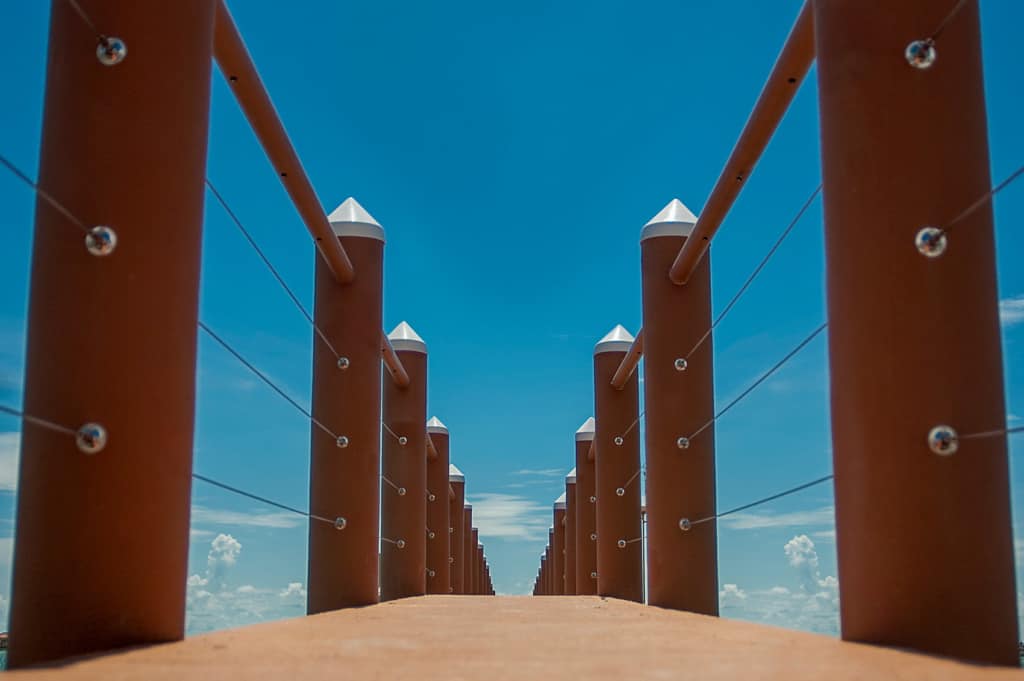
Dock Piling Advancements You Need to Know About!

Docks have been a mainstay of coastal communities for millennia. In fact, the oldest dock we know of was constructed sometime in 2500 BCE in Egypt. At the time, such a dock would have been built with only function in mind. Namely, the launching of fishing or trading vessels. Exploratory vessels may also have launched from such a port.
Contractors now have more materials available to them than ever before. For most of maritime history, wood has been an integral component of building a dock. Now, however, you can create a whole structure without a splinter or wood particle. And innovation continues, with new materials and composites being engineered by inventive problem-solvers. In this post, we’ll cover two exciting dock piling advancements that we think will help marine contractors and homeowners alike.
What’s the Best Dock Piling Material for Me?
Before getting into some of the cool products that can help dock projects last even longer, let’s look at traditional pilings as a contrast.
Initially, wood was used as a primary piling material for most (if not all) dock projects. Pressure-treated wood hit the market in the mid-19th century thanks to railroads (they needed strong ties) and grew in popularity throughout the following century. Treatment of the wood itself has varied, but the goal has remained the same: to ensure that the lumber is long-lasting and durable for the project at hand. Treated wood is one of the most affordable options for pilings and it remains a favorite for many builders because it is easy to find and easy to work with.
Steel and concrete dock pilings are also used for various projects, though more so for commercial projects. Although concrete pilings and steel pilings are made of long-lasting materials, they aren’t always suitable for residential projects and can be cost-prohibitive for smaller-scale builds.
Composite Piling
In addition to wood, concrete, and steel, marine contractors and homeowners can now choose to use composite piling for building docks. This newer pile alternative attempts to take the best from all worlds — and succeeds.
Composite pilings are stronger than traditionally treated wood pilings and longer-lasting as well. Some, such as Fortress piling, are not made with any wood, thus making them rot-resistant. Depending on the brand, composite piling may also be more environmentally friendly than treated wood, which could leach chemicals into the water where it is embedded. Composite pilings have proven themselves to be easy to work with and regulatory friendly.
We proudly carry one of the newer composite pilings on the market, Fortress Pilings. Fortress Pilings are cost-effective, attractive, and durable. Founded ten years ago in 2008, the company has truly introduced a unique product that can help homeowners and marine contractors build longer-lasting docks.
Fortress Piling’s unique fabrication makes them both resilient and strong. Each pile is composed of a barrier liner that is wrapped in fiberglass strands. The strands are coated in vinyl ester resin and finished with a gel coat. The core of the pilings can be filled with concrete or another material, making them even stronger. However, they don’t have to be filled and will be just as strong as wood without being filled. The barrier liner and the gel coat serve to protect the fiberglass strands and help make Fortress Pilings an attractive option for new decks.
Fortress Pilings come in various sizes to fit your project needs. Standard (0.25”), Medium (0.31”), and Super (0.375”) are available with 8”, 9”, 10”, and 12” diameters. Custom sizes are also available; contact Decks & Docks for more information if you are interested.
How to Repair Wood Pilings
Because so many decks do still have wood pilings — especially those built before fiberglass pilings came on the market — piling repair and protection has been an important area for innovation.
Wood pilings are susceptible to rot and to damage from boring marine organisms who either want to gnaw on the wood or make it their home. Both rot and marine life damage can impact the structural integrity of wood pilings and threaten your dock. Replacing a wood piling, however, can be difficult and costly. To extend the life of damaged wood pilings, consider using SnapJacket, a repair solution for damaged piles.
SnapJacket is composed of two pieces of plastic that are “snapped” around the damaged pile to create a casing. Concrete is then poured into the casing, filling the holes and decayed parts of the damaged woodpile and strengthening it. The new partially concrete piling helps supply structural stability to the damaged woodpile, while the hard plastic casing protects the pile for years to come. Not only will this help put off the need for immediate replacement, but it will also help strengthen the existing structure.
And Don’t Forget Piling Protection!
After investing in a long-lasting piling solution, it’s still important to take extra measures to ensure your pilings are protected. Piling caps can help give your deck a finished, uniform look while protecting your pilings from UV-Rays and rain. Pile caps are exposed to the elements, so check them regularly after storms and replace any broken caps as necessary to keep your piles protected.
If you do choose to use treated wood pilings for your dock project, consider adding a piling sleeve to extend the life of your pilings. Sleeves, such as DuroSleeve, limit the amount of water that comes in contact with wooden piles and can extend the life of the piles.
Decks & Docks: Your Piling Pros
Whether you’re building a lakeside dock with a viewing area, a dock on a canal, or a dock on the Gulf or Atlantic, the professionals at Decks & Docks can help you choose the best materials for your project and needs. With both lumber and hardware at one location and a fleet of delivery drivers, Decks & Docks is able to serve both marine contractors and homeowners with the DIY bug. Our goal is to make getting your materials easy so you can focus on building.
Stop by one of our locations or contact us online to get your project off the ground today!
- About the Author
- Latest Posts
Brian has worked for Decks and Docks for over ten years. He worked his way up the ladder, started as our Wilmington Branch Manager, opening that store for us in 2013. Brian was then promoted to our first Regional Manager and oversaw six stores before being promoted to our Corporate Office as COO. His vast experience in our industry makes him a valuable asset to the team and to our customers.
